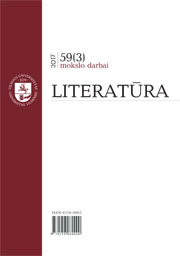ANIMAL IMAGERY IN EXPRESSING NOBILITY: SALOMON FRENZEL’S PROPEMPTICON
ANIMAL IMAGERY IN EXPRESSING NOBILITY: SALOMON FRENZEL’S PROPEMPTICON
Author(s): Ojārs Lāms, Mārtiņš LaizānsSubject(s): History, Education, Semiotics / Semiology, Studies of Literature, 16th Century
Published by: Vilniaus Universiteto Leidykla
Keywords: Salomon Frenzel; propempticon; Riga Humanism; Livonia; nobilitas literaria; vera nobilitas;
Summary/Abstract: In his propempticon poem De Vera Nobilitate, Salomon Frenzel, a humanist of the 16th century who spent his last years of activity in Riga, uses the imagery of various mythological and natural creatures (i.e., animals, mix anthropic beings etc.). These images are employed to express matters regarding education and the relationship between nobilitas generis and nobilitas literarum in general and in Livonia. The use of this specific imagery is two fold – monsters (e.g., the Cyclops, centaurs etc.) are used mainly for the description of uneducated nobles, but more idyllic and pastoral characters (e.g., the Pegasus) are used to describe the nobles who are friends with the Muses (i.e., educated in the Renaissance humanist fashion). This paper will delve into a close reading of Frenzel’s propempticon and inspect particular examples from it, providing an analysis of them in the context of the poem.
Journal: Literatūra
- Issue Year: 59/2017
- Issue No: 3
- Page Range: 61-67
- Page Count: 7
- Language: English

